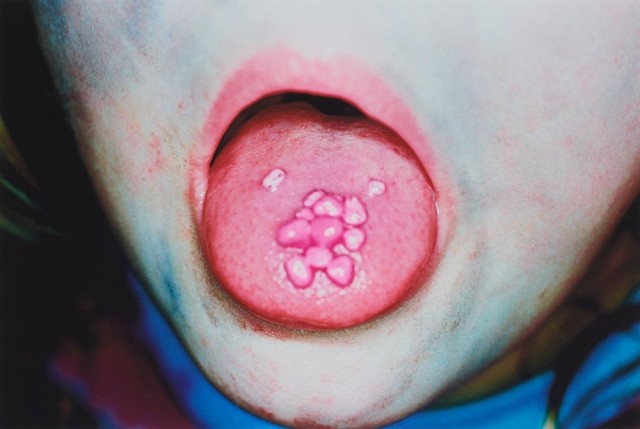They say art can change the way we look at the world, but the world can also change the way we look at art. I asked some friends to join me to comment on art works that look different in the pandemic. Contributions are presented in the order received. More next week.
—Robert Leonard
Chelsea Nichols (writer, Ghuangzhou and Ashburton): The pandemic gives a new horror tinge to works like Max Oettli’s Girl Licking Escalator (1972) and Anne Noble’s series Ruby’s Room (1998–2007)—lurid closeups of her daughter’s mouth with things in it. Knowing that children are often asymptomatic carriers and spreaders, these mouths look creepier than ever. The potentially germ-infested tongues of these tiny Typhoid Marys are capable of wreaking havoc. I also can’t stop thinking about Janine Antoni’s Lick and Lather (1993), seven chocolate self-portrait busts and seven soap ones. Both sets have been worn down, the chocolate ones through licking, the soap ones through washing. The chocolate busts have lost their sensuality, as I fixate on the invisible layer of disgusting saliva that coats them. Licking a face has shifted from something erotic and intimate to a threatening act of potential transmission. Stop touching your damn face, Janine! At the same time, the reshaped soap busts have become oddly reassuring icons of safety and salvation, made from a humble substance suddenly repositioned as a precious material.
To read more, please click here
